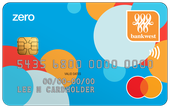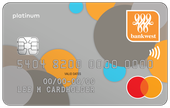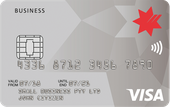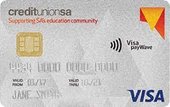
Shop now, pay later - interest-free?
What is a 0% purchase credit card?
0% purchase credit cards offer a specified period during which you will not be charged any interest on your purchases, provided you meet the minimum payment requirements. This interest-free period usually ranges from 6-12 months, but can be as long as 24 months.
Some credit providers offer 0% interest on credit cards, often for a limited period. However, lenders are unlikely to offer debt without costs, which is why it’s important to consider any associated fees and other terms and conditions carefully. This helps ensure you're getting a deal that truly suits your needs.

Enjoy big purchases, skip the interest
Why choose a 0% purchase credit card?
If you're planning to make significant purchases, a 0% interest credit card can be beneficial, as it allows you to spread the cost of your spending without the added burden of interest charges. However, it's important to plan ahead for how you'll pay off the balance before the interest-free period ends, as standard interest rates can be high.

David Boyd, co-founder of Credit Card Compare, explains, "When used correctly, introductory 0% purchase rates can save money in the short-term on credit card interest for eligible purchases. Weigh up how long the interest-free period lasts, and don't forget to consider what the rate reverts to when the introductory period ends."

The mechanics of 0% cards
How 0% purchase credit cards work
When you use a 0% purchase credit card for your transactions, the card issuer will not charge interest on the purchases you make within the promotional 0% period. This is regardless of whether you pay off your balance in full. However, just like other credit cards, you’ll still need to pay the minimum repayment amount each month, even during the promotional 0% period.
Watch closely and clear the balance before the end of the promotional period to avoid accruing substantial interest charges. After the promotional period expires, any remaining balance will be subject to the card's standard variable interest rate.

Find the 0% card that suits you
What are the best interest-free credit cards in Australia?
There are different types of interest-free credit cards in Australia, and the right one for you depends on your specific needs and financial situation. Typically, these cards offer a 0% purchase ratefor a promotional period, during which no interest is charged on your purchases. However, once the promotional period ends, the revert rate, which refers to the standard interest rate applied to new purchases or any outstanding balance, can be significantly higher.
In addition to cards with a limited 0% purchase period, you may also come across lifetime interest-free credit cards, such as the NAB StraightUp Card.
While a lifetime interest-free credit card doesn’t charge you interest, it’s unlikely to be free of cost. Such cards typically charge fixed ongoing monthly or annual fees, which can add up over time. It’s important to compare your options, including low-rate credit cards with low or no annual fees, to find the most cost-effective solution for you.
Another type of 0% interest card is a 0% balance transfer credit card. These cards allow you to transfer existing debt from another credit card and avoid interest charges for a set period, which can range from 6 months to a couple of years.
After this period, the card typically reverts to a higher interest rate, so it’s important to pay off the balance before the promotional period ends. Additionally, this type of card is usually meant for debt reduction, and you may be charged interest if you use the card for making new purchases.
To find the best interest-free card for yourself, start by thinking about the type of card you want. In general, you may want to look for the longest possible interest-free period, a low revert rate if you choose a card with an introductory 0% purchase rate, and low (or no) annual or monthly fees. Note that 0% credit cards don’t often offer rewards, but some might—so make sure to review what you want from a card and compare the features and costs to make an informed choice.

Read this before you apply
What to know before applying for a 0% purchase credit card
- Promotional period length: Consider the duration of the 0% interest period. Some cards may offer up to 24 months interest free on purchases.
- Interest rates: Be aware of the standard variable interest rate that applies or reverts back to at the end of the promotional period.
- Minimum repayment: Ensure you make at least the minimum repayment each month to avoid penalties.
- Annual fees: Check for any annual fees associated with the credit card.
- Additional perks: Some issuers combine an interest-free period on new spending with rewards like frequent flyer points.
- Eligibility criteria: Specific eligibility requirements apply to cards individually. Check that your income is high enough, that your credit score is good, and that there are no recent missed payments or rejections for credit.

Tips to get more out of your card
How to benefit the most from 0% purchase credit cards
- Set a repayment plan: Plan your repayments in such a way to clear the balance before the end of the promotional period. This can help you avoid high-interest charges.
- Monitor your spending: Keep track of your purchases and payments to stay within your budget and avoid unnecessary debt.
By considering these factors and using the card responsibly, you can take advantage of the 0% interest on purchases while avoiding penalties or additional charges.

Emma buys a laptop with a 0% purchase card
Emma, a freelance graphic designer, needed a new high-performance laptop for her work. The total cost was $3,000, but she didn’t want to pay the full amount upfront as it would drain her savings. Instead, she opted for a 0% purchase credit card with an 18-month interest-free period.
The payment plan
Emma’s credit card had a $10 monthly fee and required a minimum monthly repayment of 2% of the outstanding balance. To keep her expenses low, she decided to pay only the minimum repayment plus the monthly fee.
Her initial monthly payments looked like this:
- Minimum repayment (2% of $3,000): $60
- Monthly fee: $10
- Total monthly payment: $70
As months passed, the minimum repayment decreased as the balance reduced. However, because she was only making minimum payments, she was not on track to fully repay the $3,000 before the 18-month interest-free period ended.
The risk: What if Emma missed a payment?
If Emma missed a payment, a few costly consequences would follow:
- Late fees: She would incur a late payment fee of $30 or more, adding to her debt.
- Loss of interest-free benefit: Some 0% cards revoke the promotional rate if a payment is missed, meaning she could be charged interest on the remaining balance immediately.
- High-interest charges: If she didn’t clear the full balance by the end of the 18-month period, the remaining amount would be subject to a standard interest rate of 25% per annum. For example, if she still owed $1,500, she could be looking at over $30 in interest per month.
- Credit Score Impact: A missed payment would be reported to credit agencies, potentially affecting her ability to get loans in the future.
But what if Emma paid more each month?
To avoid paying interest after the promotional period, Emma decided to increase her monthly repayments. Instead of just the minimum, she recalculated to pay $167 per month ($3,000 ÷ 18 months) to clear the balance in time. This way, she ensured she didn’t owe anything when the 0% period expired.
The takeaway: 0% cards can work when used wisely
Emma’s case highlights how a 0% purchase credit card can help spread the cost of a big purchase without incurring interest. However, relying on minimum payments is risky, and missing a payment can lead to high fees and interest charges. The key to making the most of these cards is planning repayments to clear the balance before the 0% period ends.

0% doesn't always mean free!
Can I be charged interest on a credit card with a 0% interest rate?
Yes, you can still be charged interest on an interest-free credit card under certain conditions, such as:
Once the promotional period ends
Many interest-free credit cards offer a 0% interest rate for an introductory period, such as 6, 12, or even up to 24 months. Once this period ends, any remaining balance is charged at the card’s revert rate, which is often higher than average.
Missed or late payments
You are required to make the minimum repayment on an interest-free credit card each month, even during the promotional period. Failure to pay the minimum balance on your card could lead to late payment fees and other penalties, depending on your card's terms and conditions.
Cash advances
Most interest-free credit cards exclude cash advances from the interest-free offer. If you use your credit card to withdraw cash, you're likely to incur interest immediately, often at a higher rate. Some card providers may also charge an additional fee for cash advances.
Making new purchases on a balance transfer credit card
The low or 0% interest rate on a balance transfer credit card generally applies to the transferred balance. This means any new purchases on the card are likely to incur interest, unless the card also offers 0% interest on purchases.
It’s important to carefully read the card’s terms and conditions to understand what situations could lead to interest charges, even during an interest-free offer.

What Aussies think about interest-free cards
Redditors have mixed opinions on interest-free credit cards. Some see them as a useful tool if managed properly, while others warn of hidden traps that can lead to financial trouble.
A smart strategy if used wiseIy
Some users share positive experiences with interest-free credit cards. One Redditor noted:
"Did this several times when we were younger and we didn't have heaps of disposable income, always paid it off well inside the interest free period, even did it a few times when we could have paid cash but wanted to keep it in savings for an emergency.
"The catch is normally that if you don't pay it off, you then have to pay all the interest you would have accumulated in that 24 months.
"Another thing to consider is that this will show on your credit report and could impact future borrowing so you would need to actively close the account once you pay it off."
"If you’re disciplined and don’t use the card for anything else, it can be fine if you’re okay with the monthly fee.
"Look out for payment fees (eg. They’ll charge $1 or so for making a bpay payment every month which you’ll have to do because the free direct debit option will only be for either the minimum monthly payment or the entire balance, neither of which are what you actually want to pay).
"Lots of people also don’t realise that the ‘X days interest free on all purchases’ doesn’t actually apply if your are carrying a long-term interest free balance. So they think they can use the card for smaller purchases too and not be paying interest, but they’re actually paying the 25+% on those."
Hidden fees and unexpected costs
Many Redditors caution about hidden fees and repayment issues. One user warned:
"There's no catch if you pay on time however there are a few gotchas
"The minimum payment won't pay it back in the 24 month period
"The late fees are high if you don't pay it on time
"The interest is high if you don't pay it back in time."
A former debt collector warns:
"Once upon a time I worked at a debt collectors. It wasn't a good time, thankfully not a long time, but there is one specific lesson I learned.
"Interest free period credit cards are some of the most parasitic, devastating and insidious programs out there.
"I reckon at least 50% of all debtor accounts I saw would have come from interest free period store-issued credit cards.
"They will give you a limit higher than your purchase, to encourage you to spend more.
"They won't ensure you know exactly what you're getting into, to encourage you to think of it as "free money".
"They may even offer to increase the limit in 6,12,18 months time, to encourage you to double down and owe them even more.
"And when that 20+% interest rate comes knocking, things go south, FAST.
"The real question, and my point, is this: Are you 100% committed to ONLY using that line of credit for this one purchase, and paying it off as FAST as possible?
"If yes, first thing is to take a picture of all the card details, write them all down in multiple places, then cut the damn thing up and ensure you stick to your repayment plan.
"These things ruin the lives of the unaware or easily bamboozled."














